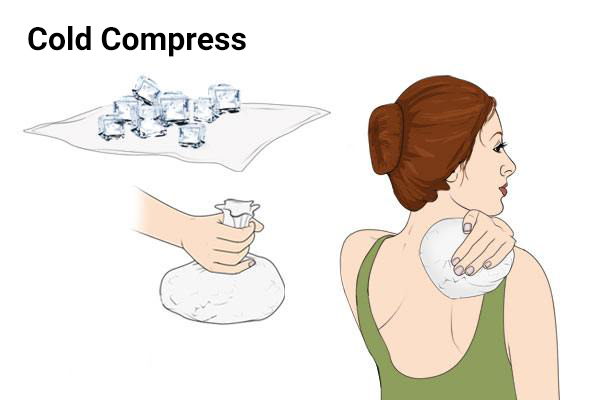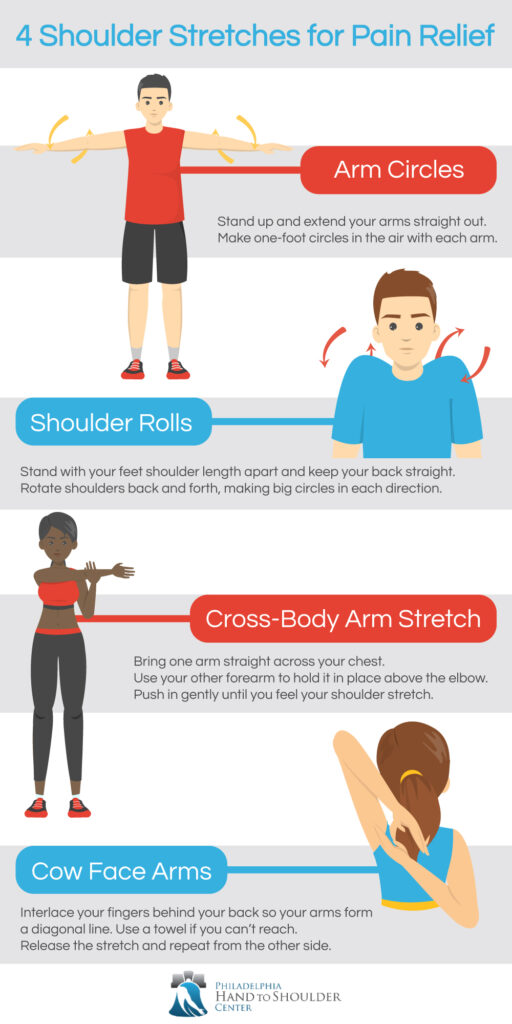If you’ve been struggling with shoulder pain, you’re not alone. Whether it’s due to an injury, overuse, or even poor posture, shoulder pain can be incredibly debilitating and affect your daily life. But what if there was a natural remedy that could help alleviate your discomfort? In this article, we’ll explore an effective solution for shoulder pain that harnesses the power of natural ingredients. Say goodbye to endless trips to the doctor or relying on medication – this remedy may be just what you need to find relief and get back to living life to the fullest. Discover how you can soothe your shoulder pain naturally and regain your mobility once again.

Understanding Shoulder Pain
Shoulder pain is a common ailment that can affect individuals of all ages and lifestyles. It can be caused by a variety of factors, from overuse and muscle strain to underlying medical conditions. Understanding the common causes of shoulder pain is crucial to finding effective relief.
Common causes of shoulder pain
There are several common causes of shoulder pain that individuals should be aware of. These include:
- Muscle strain: Overuse or excessive strain on the muscles around the shoulder joint can lead to pain and discomfort.
- Rotator cuff injuries: The rotator cuff is a group of muscles and tendons that help stabilize the shoulder joint. Injuries to the rotator cuff can cause pain and limited range of motion.
- Arthritis: Both osteoarthritis and rheumatoid arthritis can lead to shoulder pain and inflammation.
- Tendonitis: Inflammation of the tendons around the shoulder can result in pain and restricted movement.
- Frozen shoulder: Also known as adhesive capsulitis, frozen shoulder causes stiffness and pain that progressively worsens over time.
Symptoms of shoulder pain
Identifying the symptoms of shoulder pain can help individuals seek appropriate treatment. Common symptoms of shoulder pain include:
- Aching or sharp pain in the shoulder joint
- Limited range of motion
- Muscle weakness or stiffness
- Difficulty performing everyday tasks, such as reaching or lifting
- Swelling or inflammation around the shoulder
- Clicking or popping sounds in the shoulder joint
Diagnosing shoulder pain
If you are experiencing persistent shoulder pain, it is important to consult with a healthcare professional for a proper diagnosis. They may perform a physical examination, review your medical history, and order diagnostic tests such as X-rays, MRI scans, or ultrasounds.
Lifestyle Changes
Making certain lifestyle changes can greatly contribute to reducing shoulder pain and preventing further discomfort. Incorporating the following habits into your daily routine can have a positive impact on your shoulder health.
Maintaining a healthy weight
Excess weight can put a strain on the shoulders and exacerbate existing pain. By maintaining a healthy weight through a balanced diet and regular exercise, you can alleviate pressure on the shoulder joints and reduce discomfort.
Improving posture
Poor posture can contribute to shoulder pain by placing excess stress on the muscles and ligaments around the shoulder joint. Focus on maintaining proper posture throughout your day, whether sitting, standing, or walking. Sit up straight, relax your shoulders, and avoid slouching.
Avoiding repetitive movements
Repetitive movements, such as reaching overhead or typing for extended periods, can strain the muscles and tendons in the shoulders. Whenever possible, try to vary your movements and take breaks to give your shoulders a rest.
Taking regular breaks
If your work or daily activities involve repetitive tasks, it is important to take regular breaks to rest your shoulders. Stretch, walk around, and engage in activities that don’t put a strain on the shoulders to give them time to recover and reduce the risk of developing pain.
Using ergonomically designed furniture and equipment
Ensure that your workspace, including your desk, chair, and computer setup, is ergonomically designed. This will help maintain proper posture and reduce the strain on your shoulders and neck. Invest in supportive chairs, adjustable desks, and ergonomic keyboards or mouse pads to reduce the risk of shoulder pain.

Exercises for Shoulder Pain Relief
Regular exercise can play a significant role in alleviating shoulder pain and improving overall shoulder health. The following exercises can help relieve pain and strengthen the muscles around the shoulder joint.
Stretches for shoulder pain
Stretching exercises can help improve flexibility and relieve tension in the shoulders. Some effective shoulder stretches include:
- Shoulder rolls: Roll your shoulders in a circular motion, both forward and backward, to loosen up the muscles.
- Cross-body stretch: Extend one arm across your body and use your other arm to gently pull it closer to your chest.
- Shoulder extension: Stand in a doorway and place your hands on either side of the doorframe. Step forward and feel the stretch across your chest and shoulders.
Strengthening exercises
Strengthening the muscles around the shoulder joint can provide added support and stability, reducing the risk of pain and injury. Some strengthening exercises for the shoulders include:
- Shoulder press: Stand or sit with a weight in each hand and raise your arms overhead, extending your elbows fully.
- External rotation: Use a resistance band or a lightweight dumbbell and hold it with your elbow bent at a 90-degree angle. Rotate your forearm away from your body, keeping your elbow close to your side.
- Wall push-ups: Stand facing a wall with your arms extended and palms resting on the wall. Slowly lower your body towards the wall by bending your elbows, then push yourself back up.
Range of motion exercises
Maintaining a good range of motion in the shoulders is essential for overall shoulder health. Some range of motion exercises to try include:
- Arm circles: Stand with your arms extended at your sides and slowly make circles with your arms, gradually increasing the size of the circles.
- Pendulum exercises: Lean over a table or chair with your unaffected arm for support. Let your affected arm hang straight down, and gently swing it in small circles, side to side, and front to back.
- Shoulder shrugs: Sit or stand with your arms relaxed at your sides. Lift your shoulders up toward your ears, hold for a few seconds, and then relax them back down.
Hot and Cold Therapy
Hot and cold therapy can provide effective pain relief for shoulder pain by reducing inflammation, increasing blood flow, and promoting healing. Here’s how you can use hot and cold therapy to relieve shoulder pain.
Benefits of hot and cold therapy
Hot and cold therapy can offer several benefits for relieving shoulder pain. Cold therapy with ice packs or cold compresses can help reduce inflammation and numb the area, providing immediate relief. On the other hand, heat therapy with warm compresses or heating pads can increase blood flow, relax muscles, and promote healing in the affected area.
Applying heat to the shoulder
To apply heat to the shoulder, you can use a heating pad, a warm towel, or a warm shower. Make sure the heat is not too intense to avoid burning your skin. Apply the heat for 15 to 20 minutes at a time, and repeat several times a day as needed to alleviate pain and promote blood flow.
Using ice for shoulder pain
When using ice to relieve shoulder pain, you can wrap a cold pack or ice pack in a thin towel and apply it to the affected area for 10 to 20 minutes at a time. Allow your shoulder to rest for at least an hour between icing sessions. This will help reduce inflammation and numb the area to provide pain relief.

Massage and Acupressure
Massage and acupressure can be effective natural remedies for alleviating shoulder pain. They work by reducing muscle tension, improving circulation, and promoting relaxation in the affected area.
Benefits of massage for shoulder pain
Massage therapy can have numerous benefits for individuals experiencing shoulder pain. Massage can help increase blood flow to the affected area, reducing inflammation and promoting healing. It can also release tension in the muscles, providing relief from pain and stiffness.
Techniques for shoulder pain relief
There are various massage techniques that can be used to relieve shoulder pain. Some common techniques include:
- Effleurage: Long, sweeping strokes to warm up the muscles and promote relaxation.
- Petrissage: Kneading and squeezing motions to release muscle tension.
- Friction: Applying deep pressure and circular motions to target specific areas of tension or knots.
- Tapotement: Light tapping or percussive movements to invigorate the muscles and increase blood flow.
Using acupressure points for shoulder pain
Acupressure is an ancient healing technique that involves applying pressure to specific points on the body to alleviate pain and promote healing. Some acupressure points that can help relieve shoulder pain include:
- GB21: Located on the top of the shoulders, in the muscle halfway between the base of the neck and the tip of the shoulder.
- LI4: Found in the webbing between the thumb and index finger.
- SI10: Situated on the outer edge of the shoulder blade, about halfway between the top and bottom of the bony ridge.
Natural Topical Remedies
Natural topical remedies can provide additional relief for shoulder pain. These remedies can be easily prepared at home and applied directly to the affected area.
Aloe vera gel
Aloe vera gel has natural anti-inflammatory properties that can help reduce pain and inflammation in the shoulders. Apply a generous amount of aloe vera gel to the affected area and gently massage it in. Repeat several times a day for maximum benefit.
Essential oils
Certain essential oils can provide soothing relief for shoulder pain when applied topically. Lavender, peppermint, and eucalyptus oils are known for their anti-inflammatory and analgesic properties. Dilute a few drops of the preferred essential oil in a carrier oil, such as coconut or olive oil, and massage it into the shoulders.
Turmeric paste
Turmeric contains curcumin, a compound known for its anti-inflammatory properties. Mix turmeric powder with water to create a paste and apply it directly to the affected area. Leave it on for 15 to 20 minutes before rinsing off.
Epsom salt soak
Epsom salt can help relax the muscles and reduce inflammation in the shoulders. Add a cup of Epsom salt to a warm bath and soak in it for 20 to 30 minutes. The magnesium sulfate in the Epsom salt will be absorbed through the skin, providing relief for shoulder pain.
Apple cider vinegar compress
Apple cider vinegar can help alleviate shoulder pain due to its anti-inflammatory properties. Mix equal parts of apple cider vinegar and water, soak a clean cloth in the mixture, and apply it as a compress to the affected shoulder for 15 to 20 minutes.

Herbal Supplements
Herbal supplements can offer natural alternatives for managing shoulder pain and reducing inflammation. However, it is important to consult with a healthcare professional before incorporating herbal supplements into your routine, as they may interact with certain medications or have side effects.
Turmeric
Turmeric supplements can provide anti-inflammatory benefits and help reduce shoulder pain. Curcumin, the active compound in turmeric, has shown promising results in relieving joint pain and inflammation. Follow the recommended dosage on the supplement packaging or consult with a healthcare professional for guidance.
Ginger
Ginger is another herb known for its anti-inflammatory properties. Ginger supplements can help reduce pain and inflammation in the shoulders, providing natural relief. As with any herbal supplement, follow the recommended dosage or consult with a healthcare professional.
Boswellia
Boswellia, also known as Indian frankincense, has been used for centuries to relieve pain and inflammation. Boswellia supplements can be beneficial for reducing shoulder pain. It is advisable to follow the recommended dosage or seek guidance from a healthcare professional.
Devil’s claw
Devil’s claw is an herb with analgesic and anti-inflammatory properties. Devil’s Claw supplements can help alleviate shoulder pain and improve joint mobility. Adhere to the recommended dosage or consult with a healthcare professional before using Devil’s Claw.
White willow bark
White willow bark contains salicin, which has similar properties to aspirin, making it a natural pain reliever. White willow bark supplements can help reduce shoulder pain and inflammation. Follow the recommended dosage or seek guidance from a healthcare professional.
Dietary Adjustments
Making dietary adjustments can play a significant role in managing shoulder pain and reducing inflammation. By incorporating certain foods into your diet and avoiding trigger foods, you can support joint health and alleviate discomfort.
Incorporating anti-inflammatory foods
Certain foods can help reduce inflammation in the body and alleviate shoulder pain. Incorporate the following anti-inflammatory foods into your diet:
- Fatty fish: Salmon, mackerel, and sardines are rich in omega-3 fatty acids, which have anti-inflammatory properties.
- Leafy greens: Spinach, kale, and other leafy greens are packed with antioxidants and nutrients that can help reduce inflammation.
- Berries: Blueberries, strawberries, and raspberries contain antioxidants that can help fight inflammation.
- Olive oil: The monounsaturated fats in olive oil have anti-inflammatory effects and can support joint health.
- Nuts and seeds: Almonds, walnuts, and chia seeds are rich in omega-3 fatty acids and can help reduce inflammation.
Avoiding trigger foods
Certain foods can trigger inflammation and worsen shoulder pain. It is important to identify and avoid these trigger foods, which may include:
- Processed and fried foods: These foods often contain unhealthy fats and additives that can promote inflammation.
- Sugary snacks and beverages: High sugar intake can lead to increased inflammation in the body.
- Refined grains: White bread, pasta, and other refined grains can contribute to inflammation.
- Alcohol: Excessive alcohol consumption can exacerbate inflammation and joint pain.
Foods rich in omega-3 fatty acids
Omega-3 fatty acids have anti-inflammatory properties and can support joint health. Incorporate foods rich in omega-3s into your diet, such as:
- Fatty fish: Salmon, mackerel, and sardines are excellent sources of omega-3s.
- Flaxseeds and chia seeds: These seeds are high in omega-3 fatty acids and can be added to smoothies, yogurt, or oatmeal.
- Walnuts: Snack on a handful of walnuts for a dose of omega-3s.
- Soybeans and tofu: These plant-based foods are rich in omega-3s and can be added to stir-fries or salads.
Hydration for joint health
Staying properly hydrated is crucial for joint health and reducing inflammation. Aim to drink an adequate amount of water throughout the day to support overall joint health and alleviate shoulder pain.

Rest and Relaxation
Rest and relaxation play a vital role in managing and preventing shoulder pain. Giving your shoulder ample time to rest and adopting relaxation techniques can promote healing and reduce stress.
Importance of rest for shoulder pain
Resting the affected shoulder is crucial for allowing the muscles and ligaments to heal. Avoid activities that aggravate the pain and take breaks from repetitive tasks that may strain the shoulder. Adequate rest will help reduce inflammation and promote recovery.
Creating a comfortable sleeping environment
A comfortable sleeping environment is essential for shoulder pain relief. Invest in a supportive mattress and pillows that provide proper alignment for your neck and shoulders. Side sleepers may benefit from placing a pillow between their arms for added support.
Relaxation techniques for shoulder pain relief
Incorporating relaxation techniques into your routine can help reduce stress and tension in the shoulders, promoting pain relief. Some relaxation techniques that may benefit shoulder pain include:
- Deep breathing: Practice deep breathing exercises to promote relaxation and reduce muscle tension.
- Meditation: Engage in regular meditation sessions to calm the mind and relax the body.
- Yoga or tai chi: These gentle exercises can improve flexibility, reduce stress, and support overall shoulder health.
- Warm baths or showers: Soaking in warm water can help relax the muscles and relieve shoulder pain.
Conclusion
Shoulder pain can be a bothersome and limiting condition, but there are numerous natural remedies available to alleviate discomfort and promote healing. By understanding the common causes of shoulder pain, making necessary lifestyle changes, practicing exercises for pain relief, and utilizing natural remedies like hot and cold therapy, massage and acupressure, topical remedies, herbal supplements, dietary adjustments, and rest and relaxation, you can find the right approach that suits your individual needs. Remember to consult with a healthcare professional before starting any new treatment or supplement regimen. With patience and consistency, you can effectively manage shoulder pain and improve your overall shoulder health.
Related Terms About Natural Remedy For Shoulder Pain.
Home Remedies For Pain In Shoulder And Neck, Home Remedies For Shoulder Pain In Tamil, Home Remedy For Shoulder And Elbow Pain, Home Remedy For Shoulder Pain Due To Gas, Indian Home Remedies For Shoulder Pain, Natural Herbs For Shoulder Pain, Natural Pain Relief For Shoulder Pain, Natural Remedies For Severe Shoulder Pain, Natural Remedies For Shoulder Pain, Natural Remedies For Shoulder Pain Exercises, Natural Remedy For Frozen Shoulder Pain, Natural Remedy For Pain In Shoulder, Natural Remedy For Shoulder Blade Pain, Natural Remedy For Shoulder Nerve Pain, Natural Remedy For Shoulder Pain, Natural Remedy For Shoulder Pain Relief, What Is A Natural Remedy For Shoulder Pain